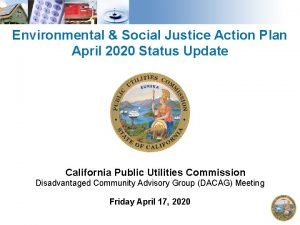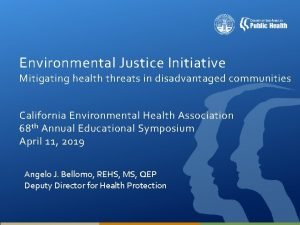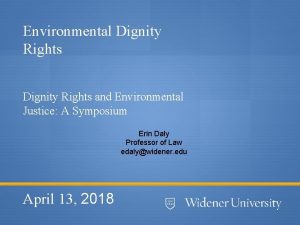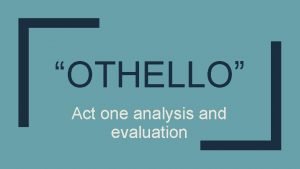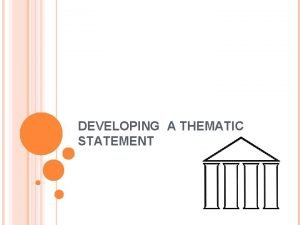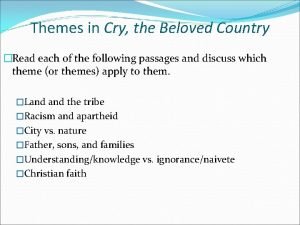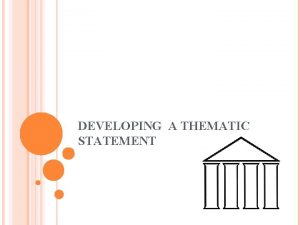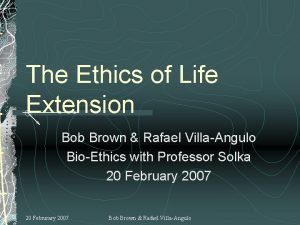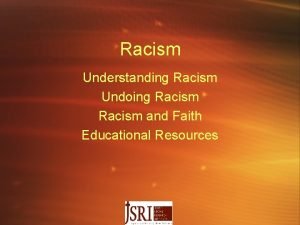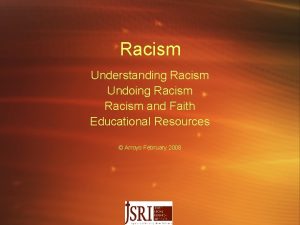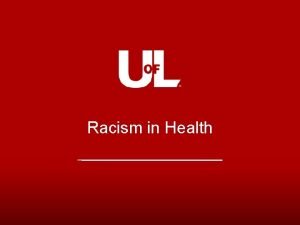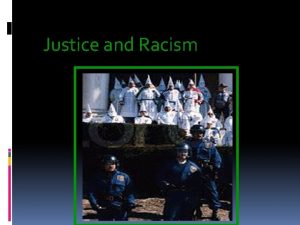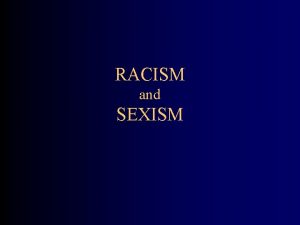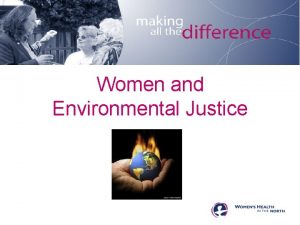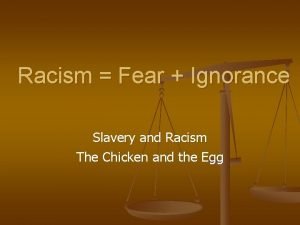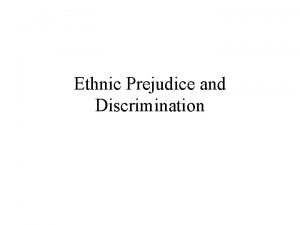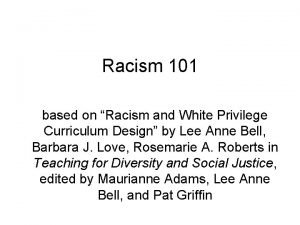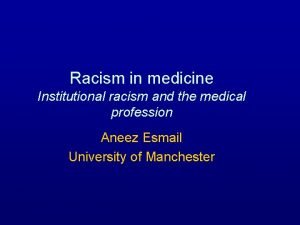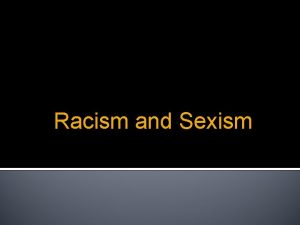Todays Topics l Environmental Racism Justice and Environmental














- Slides: 14

Today’s Topics l Environmental Racism Justice and Environmental

Jared Diamond: Why Societies Fail: l Failure to anticipate a problem l Failure to perceive a problem l Failure to try to solve a problem l Failure to solve despite attempts

Environmental Justice Two questions: 1. How is the burden of pollution distributed in our society (who actually bears the burden)? 2. How should the burden of pollution be distributed (who ought to bear the burden)? l

Who Bears the Burden of Pollution? l Demographic and epidemiological analysis. l Start with EPA lists of Toxic Release Points (TRP’s) and Hazardous Waste Sites (Superfund sites) l Toxic sites cluster—Louisiana (cancer alley), LA, Chicago, New Jersey, Pacific Northwest (Hanford, WA) l Most studied area is cancer alley

Cancer Alley

Problematic Industries Located Along Cancer Alley l Refineries l Plastic polymer industries (chlorine, benzene) l Dry-cleaning chemical manufacturers

Who Bears the Burden? l After identifying site clusters: l Use GIS and Census data to identify income, racial, ethnic, and religious profile of people living in proximity to the TRP’s l Perform a multiple regression analysis to determine which factors account for proximity to TRP’s l Race is the strongest predictor—

Who Bears the Burden? l Blacks, Native Americans, Hispanics and Asians are 2 -3 times more likely to live near a TRP than comparable income whites. l Finally, compare health profiles of those living near TRP’s to those further away. l Respiratory ailments in Cancer Alley are 4 times the national average. l Cancer rates vary by type of cancer but in some instances (liver) are 10 times the national average.

Who SHOULD Bear the Burden? l This is a normative question that is loaded with value assumptions. l The Summers memo l From an economic point of view, the poor should bear this burden. l The economic (and political)logic behind selecting Yucca Mountain

Burden Distribution Principles l. A question of distributive justice

Distributive Justice l Act in way that promote a just* distribution of social goods.

Theories of Justice Include: l Equality l Need l Contribution l Effort l Merit l Market forces

Environmental Racism The intentional targeting of people of color to bear the burden of pollution. l In Cancer Alley companies bought out white residents living in proximity to TRP’s but did not buy out similarly situated people of color. l Studies in LA and Chicago discovered intentional targeting of minority neighborhoods. l

Studying Environmental Justice and Environmental Racism l Deep South Center for Environmental Justice www. DSCEJ. org l Mid-South Center for Environmental Justice here at Southeast
 Cpuc esj action plan
Cpuc esj action plan Shakespeare's tragedy about racism and jealousy
Shakespeare's tragedy about racism and jealousy Root cause of envy
Root cause of envy Racism and slavery
Racism and slavery Race racism and sports journalism
Race racism and sports journalism What is environmental justice
What is environmental justice What is environmental justice
What is environmental justice To kill a mockingbird with page numbers
To kill a mockingbird with page numbers What is wrong with tom robinson's arm
What is wrong with tom robinson's arm Devour up my discourse
Devour up my discourse Thematic statement checker
Thematic statement checker Cry the beloved country racism essay
Cry the beloved country racism essay Documented essay outline
Documented essay outline Thematic statement examples for racism
Thematic statement examples for racism What do about racism
What do about racism
